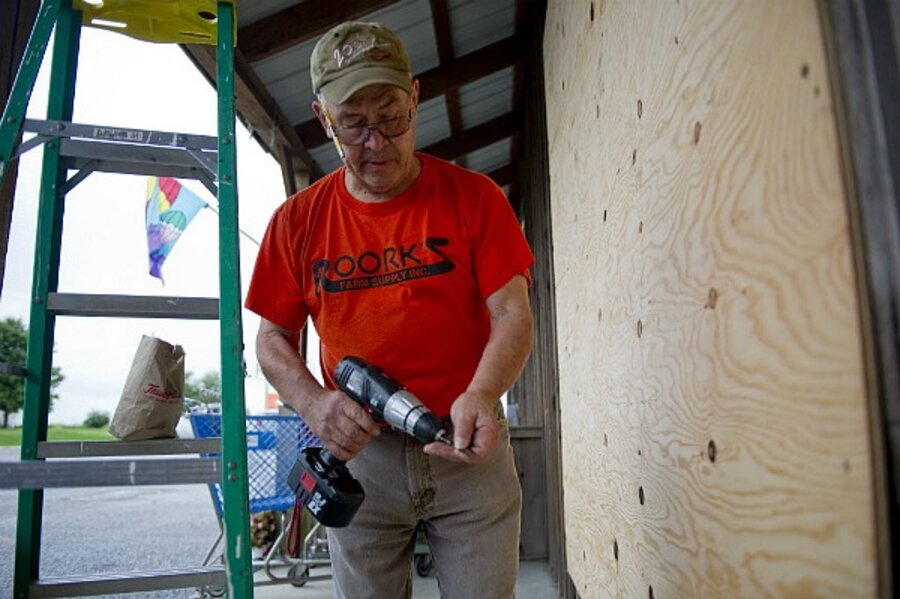Hurricane Irene update: After initial landfall, storm heads north
Hurricane Irene is battering eastern North Carolina, and tropical storm conditions are spreading northward along the Delaware-Maryland-Virginia coast, according to the National Hurricane Center.
Irene may have been downgraded to a Category 1 storm. But following the hurricane’s initial landfall at about 7:30 a.m. Saturday, a hurricane warning is in effect from the Little River inlet in North Carolina northward to Sagamore Beach, Mass., including the Pamlico, Albemarle, and Currituck sounds, Delaware and Chesapeake Bays, New York City, Long Island, coastal Connecticut and Rhode Island, Block Island, Martha’s Vineyard, and Nantucket.
“Irene remains a large and dangerous storm,” Homeland Security Secretary Janet Napolitano said at a news briefing Saturday morning She advised residents in the hurricane’s path to “hunker down.”
RECOMMENDED: Five things you can do to keep safe in a hurricane
“Stay inside until the storm passes, stay off the roads,” she said.
As Irene moved north Saturday, President Obama signed pre-disaster emergency declarations for New Hampshire, Rhode Island, New Jersey, and Connecticut, making those states eligible for federal aid to protect property and public health and safety.
Meanwhile, the Federal Emergency Management Agency (FEMA) has positioned 18 Incident Management Assistance Teams along the coast to coordinate with state, tribal and local officials to identify needs and shortfalls affecting potential disaster response and recovery. Six national urban search and rescue teams have been placed on alert in the event that search and rescue support is needed. The Department of Health and Human Services has deployed five Disaster Medical Assistance Teams to staging areas.
At the Saturday briefing, National Hurricane Center director Bill Read said there is “a high probability” of storm surges of 4-8 feet. Coupled with 5-10 inches of rain, he said, the mid-Atlantic states, New York, and New England can expect flash flooding and river flooding.
One concern among officials is the temptation to go outside once the storm seems to be abating.
“In the immediate aftermath, the best thing for people to do is stay home, stay inside,” says FEMA administrator Craig Fugate.
Hurricane prep: Are you smarter than a storm tracker? Take our quiz





